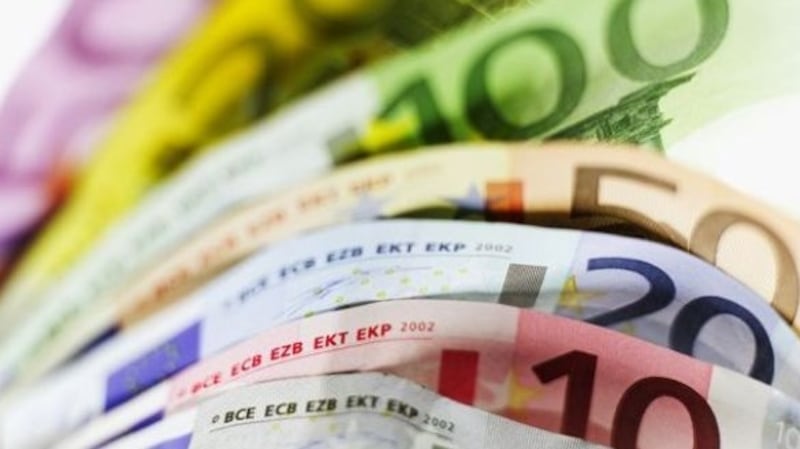The budget each year oversees vast sums of money – total Government spending next year will exceed €95 billion. But the amount which changes on budget day itself is only a fraction of this – the battles are over the few billion which are allocated to new spending measures or tax cuts. And this is what determines the changes you will feel in your pocket. So what can you expect this year?
1. The key figures
The Government has already outlined the framework for the Budget in the Summer Economic Statement, which said that it will involve a package of €6.4 billion, of which €1.1 billion is for the tax package.
These are net figures – in other words room for manoeuvre can be increased by increasing taxes or cutting spending in some areas to leave more scope. This is unlikely to be too relevant on the spending side – programmes are unlikely to be cut. But some additional tax revenue is likely to be raised, allowing the income tax cuts to be more than the €1.1 billion figure.
One area of new revenue is the bank levy, which is due to run out at the end of the year. Minister for Finance, Michael McGrath, has already indicated that this will be renewed, though he says he is considering whether to make changes to the current rules.
RM Block
Prior to the departure of Ulster Bank and KBC the levy raised €150 million a year, though this has fallen to €87 million this year. A tweak in the rules could increase this a bit for 2024 – either way it will offer some precious additional flexibility in putting together what will be a fairly limited income tax package.
The other big budget revenue raiser will be the increase in the corporate tax rate to 15 per cent for the biggest firms – though with uncertainty over the outlook here, this money is not likely to be put towards an income tax package.
However, some other smaller measures could increase the pot for tax cuts in 2024 a bit further. This is likely to mean the tax package is a bit more than the €1.1 billion figure and also slightly ahead of last year.
Meanwhile, a lot of focus will be on how much of the additional spending is directed towards increasing weekly welfare rates. Pre-budget estimates are that every €1 rise in core rates and child benefit costs around €130 million. In the last budget, weekly rates were increased by €12, a move criticised as insufficient by social campaigners.
However, the Government topped this up with significant extra funding via once-off payments. A key decision this year will be the size of the permanent rise as well as what temporary measures are put in place.

2. So what are the specifics for households in terms of permanent changes?
The indications are that the income tax package will focus on two areas – increasing the point at which taxpayers hit the higher 40 per cent rate, currently €40,000 for a single person, and a cut in the 4.5 per cent USC rate, which applies on income from just below €23,000 to just over €70,000. Tax credits will also rise.
The key decision is how much to increase the entry point to the higher rate – the width of the standard rate band. It rose by €3,200 last year. A €3,000 rise this year would cost close to €700 million, eating up a fair amount of the available cash.
This would be worth €600 a year for those who earn enough to fully benefit, or slightly more if last year’s increase is matched. A similar €75 increase in personal tax credits – as announced last year – would raise the cost to over €1 billion. Credit increases put money straight into taxpayer’s pockets.
The question then is whether the USC rate will be cut as well. A half point cut in the 4.5 per cent rate to 4 per cent would cost an additional €220 million.
It might just fit in the sums, though the trade-off would be limiting the rise in the standard band slightly. The benefits to taxpayers depend on what they earn. For a €50,000 earner, a half-point cut in the 4.5 per cent USC rate would be €135 a year, while for someone on €70,000 it would be around €235.
In total this kind of tax package would deliver a bit over €800- €850 a year for a middle earner. This is, of course, looking at a static picture. If we add in wage increases, tax bands and credits need to adjust to ensure that people don’t pay a higher proportion of their income in tax. What may be put in place roughly achieve this indexation for many, though the impact of tax band changes in particular depends on how much an individual earns.
The other key question is the extent of the likely rise in weekly welfare payments and pensions, where inflation is also a key factor. The €12 a week put in place for this year would look like the least that could be offered.
The question is whether the Government goes a bit higher, acknowledging that some of the cost-of-living pressures are set to persist. Or will use the fact that inflation is easing to stick with the €12 figure? And what then happens with once-off measures.
Those on fuel allowances are also in line for more support. And in terms of their pockets, families will keep a close eye on what happens in areas such as childcare supports – where significant extra help is promised – public transport fees, university charges and so on.

3. The once-off changes
A package of some €4 billion was announced for this year in once-off measures, mainly aimed at welfare recipients, but also including general supports including three €200 energy credits and a double week’s child benefit payment.
The outlook here is uncertain as decisions have still to be made in Government about the scale of the once-off package this year – the budget Ministers Michael McGrath and Paschal Donohoe will argue that it should be significantly lower, with inflation and energy costs easing. However, others in the Cabinet will argue for generosity.
With some €600 million set to be raised by a tax on the windfall profits of energy companies, we can expect at least one more €200 energy credit. As each one costs around €400 million. Donohoe and McGrath will hold out against committing to another string of payments. There will also be specific measures aimed at less well-off households in this area.
While the Christmas double payment week will be repeated, it remains to be seen what other welfare measures there are and whether the Government again opts for costly double weeks in welfare and child benefit.
In terms of both people’s pockets and the shape of the budget, this issue of the scale and shape of the once-off package remains the key outstanding question. Households can expect some help from one-off measures, but not as much as they received in late 2022 and 2023.
















